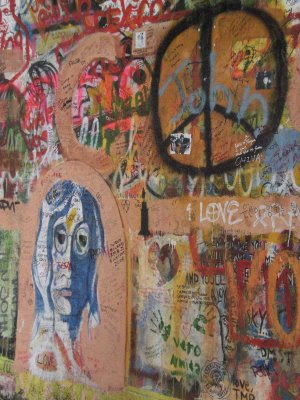


Monday morning our workshop gained three new poets and a new instructor, Stanley Plumly. There are so many ways to read poetry, to figure out what’s going on in a wise reader’s mind. I have exciting ideas for revision but I don’t really know where to begin my rewriting yet.
Monday night I went with Jennifer, Chad, Stephanie and James to the Jazz club U Glena and watched Stan the Man perform the blues on his guitar with a drummer, base, and keyboards accompaniment. This club is downstairs in a small dimly lit cavern. Stan’s lips embraced the microphone as he crooned and shouted BB King and rock tunes to the rapt crowd. Our tiny round tables were overlapping and soon we found out our neighbors were Czech ski instructors who had skied all over the US and Europe of course, including Alpine Meadows in Tahoe. Along with the drum and keyboard solos, Stan’s singing set a spell over the room.
Tuesday night after the readings, I sipped fresh ginger tea at Café Savoy. The Savoy is a large friendly Austrian styled café with just incredible food. It has become a regular place for me to write in their comfortable booths. Thursday night held another reading.
Saturday morning our bus left the dorms for Cesky Krumlov. We wandered the old town dominated by a palace set on the spine of a hill above the river. That night we watched the Rusalka opera by Antonin Dvorak performed outdoors in the night time rain in the palace gardens. Our seats turned to follow the actors who ran the large circle around us. The lighting in the forest set off the trees and the rain that continued to drop from the branches. It was a sport performance – those actors must have run a few miles at least even as they sang and our seats spun to face us to whichever portion of the donut-shaped stage the action occurred. It was an unbelievable, magical night. After an hour or so the stars began appearing in the sky and the temperature dropped well below normal. The crowd, covered in clear plastic rain ponchos, rustled and dripped. The actors didn't show any notice of the cold and wet as they threw themselves into the grass or onto the wooden pier. In the end, will o wisp lights floated over the marsh and everyone died. It was beautiful. Long past midnight, we walked back through the castle, down the hill into town.



















